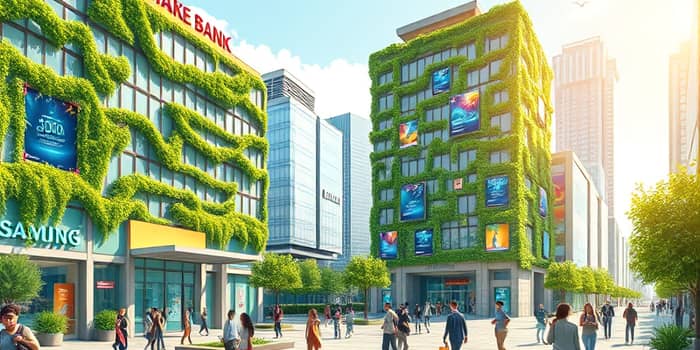
In an era when consumers demand ethical banking, transparency, and vibrant experiences, the financial industry can no longer afford to hide behind drab, impersonal design. “Beyond Beige” represents a bold shift toward a future where sustainability and innovation converge to offer clients meaningful, human-centered solutions.
As green finance and ESG investing surge, financial institutions are racing to integrate sustainable principles into every touchpoint, from digital interfaces to physical branches. This transformation is not merely cosmetic—it addresses a deeper need for trust and purpose in a world facing environmental and social challenges.
Sustainability has evolved from a niche concern to a mainstream priority. Recent studies forecast global ESG assets to exceed $50 trillion by 2025, underlining the massive appetite for impact-focused products. Institutions that embrace this trend benefit from both capital inflows and enhanced brand loyalty, particularly among Millennials and Gen Z.
Major players have already made significant commitments. HSBC, for example, has earmarked $10 billion in sustainable bonds for renewable energy and eco-infrastructure by 2025. Across the sector, new financing structures—such as sustainability-linked loans and green rewards—are emerging to meet diverse client needs.
Gone are the days of bland interfaces. Today’s customers expect financial apps to reflect their values and lifestyles. To achieve this, designers focus on:
By weaving sustainability metrics directly into dashboards, banks foster deeper engagement. Users can track their carbon footprint, earn eco-points, and even tip the scale on community projects, all within a single platform that celebrates progress with vibrant visuals.
Physical branches remain essential for building trust. Leading institutions are turning them into showcases of resilient and sustainable strategies. Examples include mass timber structures, low-carbon finishes, and adaptive reuse of historic buildings.
These innovative spaces offer more than transactions. They host community workshops on green finance, feature solar canopies in outdoor seating areas, and display impact dashboards on interactive walls. Branches become living embodiments of a bank’s ecological commitment.
Ethical expectations are now drivers, not afterthoughts. Today’s investors and bank customers routinely check ESG ratings before signing on. Those that ignore sustainability risk obsolescence.
Purpose-driven brands enjoy amplified word-of-mouth advocacy, especially among younger demographics. Platforms enabling “social banking,” where communities co-create financial solutions, are forging stronger bonds and fostering peer learning networks.
Financial institutions are experimenting with green rewards and carbon tracking embedded in everyday banking:
These innovations demonstrate that pursuing profits and positive impact need not be mutually exclusive.
To remain competitive, institutions must engage in a systemic reallocation toward green finance. This requires robust risk management frameworks, harmonized reporting standards, and investments in traceability technologies like blockchain and AI.
Regulators are also tightening requirements, pushing for modern disclosure frameworks that balance innovation with accountability. Institutions that lead in transparency gain favor with both investors and regulators, securing a strategic advantage.
While momentum builds, challenges persist. Greenwashing remains a threat, risking backlash and reputational damage. Authenticity demands measurable, verifiable impact reporting.
The future lies in embracing decentralized models, embedded finance, and continuous digital transformation, all while centering social and environmental returns. Financial institutions that dare to go beyond beige into vibrant design will not only survive—they will thrive.
By integrating sustainability at every level—from product design to branch architecture—banks can become true purpose-driven beacons, guiding customers toward a greener financial future.
References





